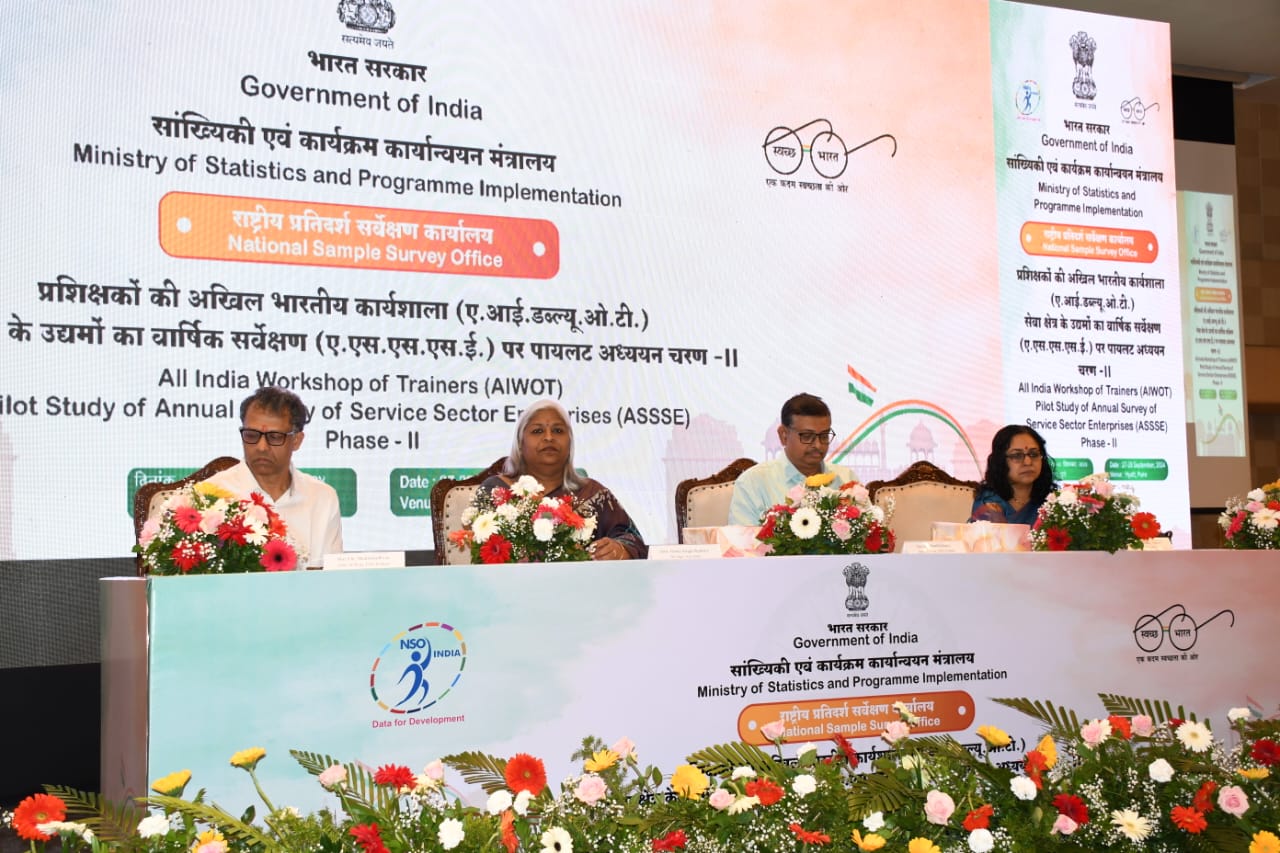- Courses
- GS Full Course 1 Year
- GS Full Course 2 Year
- GS Full Course 3 Year
- GS Full Course Till Selection
- CSAT
- 5 LAYERED ARJUNA Mentorship
- Public Administration Optional
- Online Program
- GS Recorded Course
- NCERT (Recorded 500+ Hours)
- Polity Recorded Course
- Geography Recorded Course
- Economy Recorded Course
- AMAC Recorded Course
- Modern India, Post Independence & World History
- Environment Recoded Course
- Governance Recoded Course
- Science & Tech. Recoded Course
- International Relations and Internal Security Recorded Course
- Disaster Management Module Course
- Ethics Recoded Course
- Essay Recoded Course
- Current Affairs Recoded Course
- ABOUT US
- OUR TOPPERS
- TEST SERIES
- FREE STUDY MATERIAL
- VIDEOS
- CONTACT US
PLACES IN NEWS 3rd MAY 2025
PLACES IN NEWS 3rd MAY 2025

Chandola Lake
Why in news?
a. The Gujarat High Court recently upheld the state's demolition drive conducted in Ahmedabad’s Chandola Lake area, supporting the authorities' action.
About Chandola Lake:
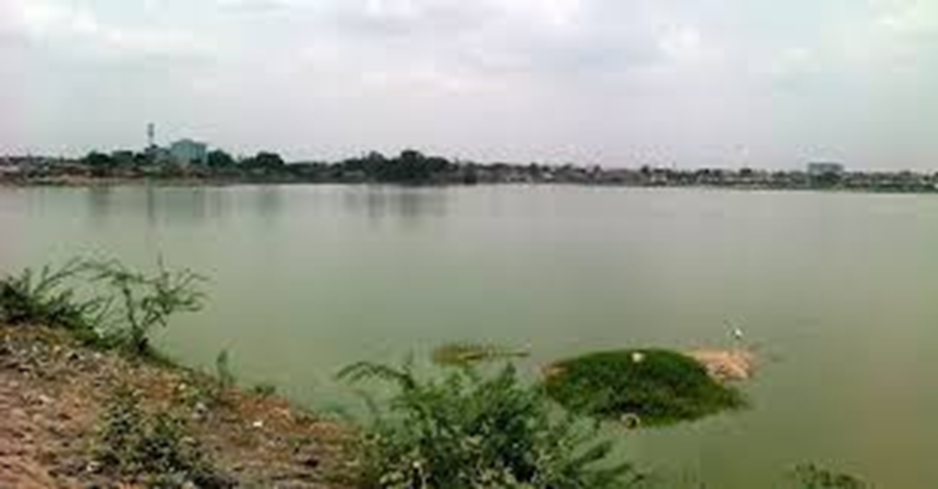
- Location and Historical Background:
- Chandola Lake is an artificial lake located in Ahmedabad, Gujarat.
- It was established by the wife of Mughal Sultan Tajn Khan Nari Ali.
- The lake spans an area of approximately 1200 hectares and is designed in a
circular shape.
-
- It is divided into two distinct parts—Chota Chandola and Bada Chandola.
- The lake is situated near the tomb of Shah Aalam, a revered Muslim religious teacher.
- The tomb, constructed between 1475 and 1483, is adorned with precious gold and stones.
- Ecological Significance:
- Chandola Lake plays a critical role in the region's ecological balance.
- It serves as a major water source for nearby industrial and residential areas, thereby supporting both human and ecological needs.
-
- The lake is part of the Kharicut Canal Scheme, one of the oldest irrigation projects in Gujarat, built to irrigate 1,200 acres of rice fields.
- The lake is also a habitat for migratory and native bird species such as cormorants, painted storks, and spoonbills, making it ecologically vibrant and biodiverse.
- Demolition Drive:
- Recently, a demolition drive was undertaken by state authorities around the Chandola Lake area.
- The action was aimed at clearing illegal encroachments that had developed over the years, posing threats to both the lake’s ecological health and its irrigation function.
- The Gujarat High Court upheld the drive, citing the need to restore the lake’s natural structure and protect its environmental and historical integrity.
Vizhinjam seaport
Why in news?
a. The Prime Minister of India inaugurated the Vizhinjam seaport in Kerala, enhancing India’s maritime infrastructure and boosting trade through strategic international shipping routes.
About Vizhinjam seaport:
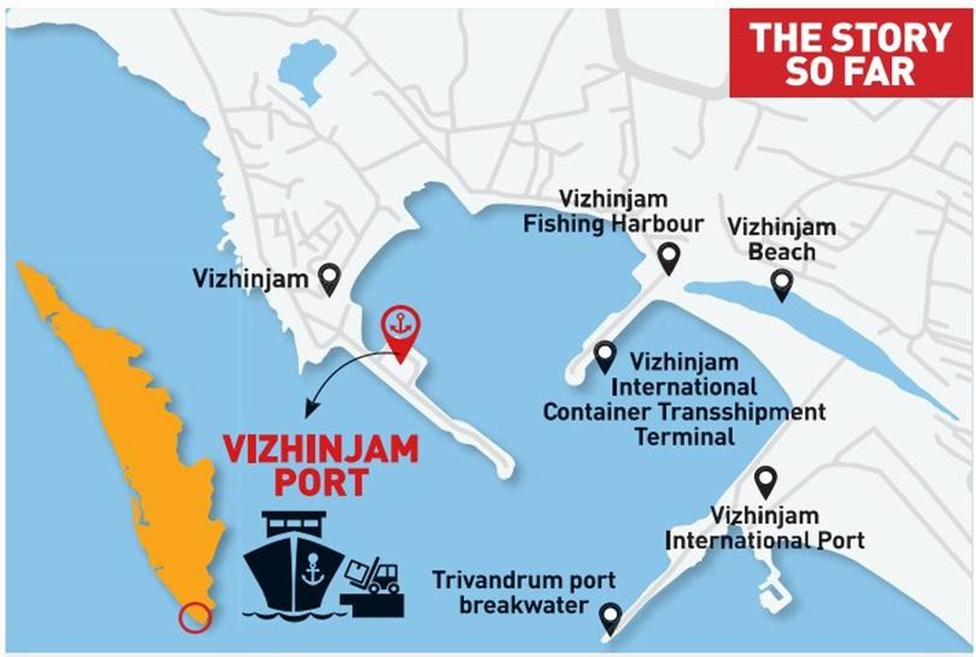
- Location and Development:
- Vizhinjam Seaport is located in Vizhinjam, a coastal town in
Thiruvananthapuram District, Kerala.
-
- It is India’s first dedicated transhipment port and also the first semi-automated port in the country.
- Developed under the Public-Private Partnership (PPP) model at a cost of
₹8,900 crore, it is operated by the Adani Group, while the Kerala government holds the majority stake.
- Key Features:
- The port is equipped with cutting-edge infrastructure. It boasts India’s deepest breakwater, stretching nearly 3 kilometres, and a natural draft of 20 metres, making it capable of hosting large container vessels.
- Vizhinjam features India’s first AI-powered Vessel Traffic Management System, developed in collaboration with IIT Madras.
- The port also utilises automated yard cranes and remotely operated ship-to-shore cranes for enhanced operational efficiency.
- Notably, it experiences minimal littoral drift, reducing maintenance and dredging costs significantly.
- Strategic Significance:
-
- Positioned just 10 nautical miles from a key international shipping lane, Vizhinjam is strategically vital for India’s maritime ambitions.
- It aims to reclaim a major portion of India’s transhipment traffic, of which 75% was earlier handled by foreign ports, causing substantial foreign exchange losses.
- The port now shares routes with global maritime hubs like Shanghai, Singapore, and Busan.
- Plans are underway to develop Vizhinjam into a multi-modal logistics hub, integrating NH-66 highway connectivity, Kerala’s first cloverleaf interchange, and an upcoming rail link to the national network, enhancing India’s global trade footprint.
Palamu Tiger Reserve
Why in news?
a. After years of efforts, Jharkhand forest officials successfully relocated Jaigir village from Palamu Tiger Reserve’s core, marking a conservation milestone.
About Palamu Tiger Reserve:
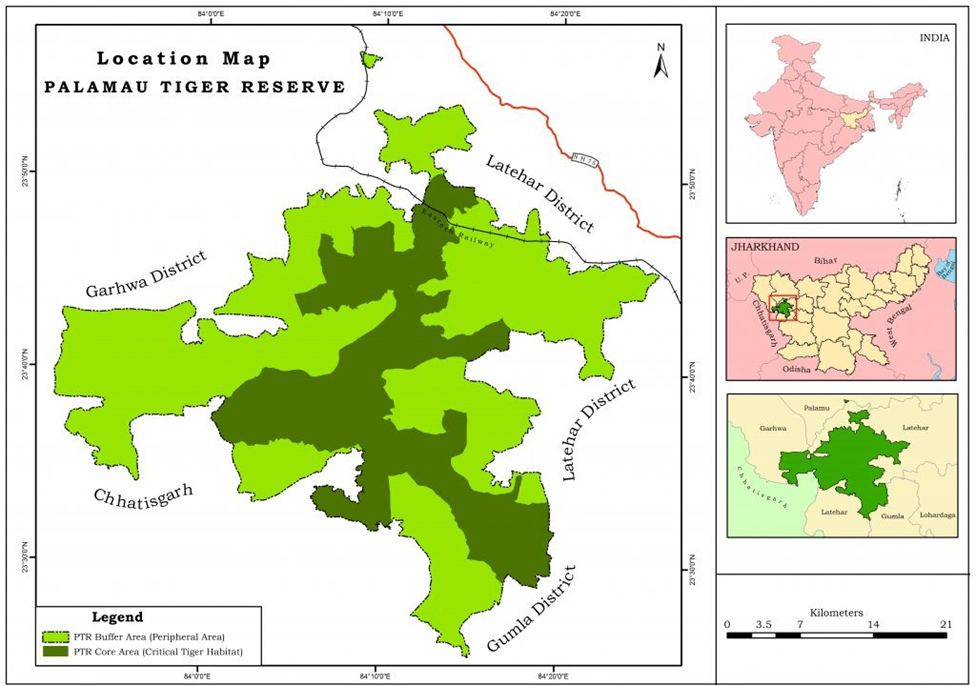
- Location:
- Palamu Tiger Reserve is located in the Palamu, Latehar, and Garhwa districts of Jharkhand, spanning an area of 1,129.93 sq. km.
- It includes the Betla National Park and the Mahuadanr Wolf Sanctuary, forming a part of the Chotanagpur Plateau.
- Three rivers—North Koel, Burha, and Auranga—flow through the reserve, enriching its ecology.
- The elevation ranges from 300 to 1,140 meters, and the region receives an average rainfall of 1,075 mm annually.
- Flora and fauna:
- The reserve is home to a rich diversity of flora, primarily comprising deciduous forests with species such as sal and bamboo.
- The forest types include dry and moist sal forests, savannah woodlands, and
mixed deciduous patches.
-
- Over 970 plant species, including 56 medicinal and 17 grass species, are found here.
-
- In terms of fauna, Palamu hosts 47 mammal species and 174 bird species. Prominent mammals include the Bengal tiger, Indian leopard, sloth bear, gaur, elephants, and wolves.
- Avian diversity features peafowls, hornbills, owlets, kingfishers, and storks.
- Although tiger numbers once exceeded 50, habitat degradation and Naxal presence had reduced the count to one in 2022. Encouragingly, six tigers were recorded in 2025.
- Habitation within the reserve:
- Habitation within the reserve has historically been a concern. Several villages existed in the core and buffer areas, often lacking legal titles.
- Until recently, Jaigir, Kujrum, and Latu villages were within the core zone.
- However, successful relocation efforts aim to improve both human welfare and tiger conservation.
- Despite these efforts, issues like illegal grazing, poaching, staff shortages, and
infrastructure development continue to threaten the ecosystem.
Banganga River
Why in news?
a. The rejuvenation of Banganga River aims to restore its ecological health, improve water quality, and promote sustainable development in the region.
About Banganga River:
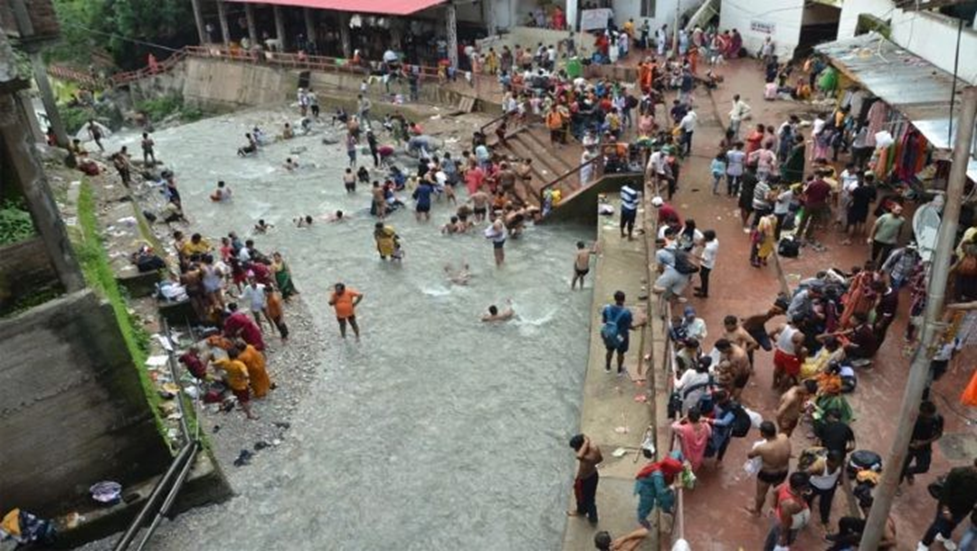
- Location:
- The Banganga River originates from the southern slope of the Shivalik range of the Himalayas in Jammu and Kashmir.
- It flows through the town of Katra before joining the Chenab River.
- The river holds significant cultural and ecological value, particularly as an important stop on the Vaishno Devi pilgrimage.
- Cultural significance:
- The Banganga River has deep spiritual and cultural roots, especially in Hinduism.
- According to legend, the river was created by Vaishno Devi, the mother goddess, who shot an arrow into the ground, making water spring from it to quench the thirst of Lord Hanuman, her companion.
- Devotees believe that bathing in the river purifies the soul, and it has thus become a key site for those undertaking the Vaishno Devi pilgrimage.
- Every year, millions of pilgrims make the journey to bathe in the river and cleanse themselves spiritually before continuing their journey to the Vaishno Devi Temple.
- The river’s name "Banganga" derives from the Hindi words ban (arrow) and ganga (river), and it is also referred to as Bal Ganga ("Bal" meaning hair), which links the river's creation to a legend of Vaishno Devi washing her hair in the river.
- Ecological significance:
- Ecologically, the Banganga is an important tributary of the Chenab River and plays a crucial role in maintaining the water balance in the region.
-
- The river flows through varied terrain, offering a range of habitats for local flora and fauna.
- Its role in sustaining the ecology of the area, particularly around the Vaishno Devi
temple, is significant for the preservation of local biodiversity.
- Other Banganga Rivers in India:
- Apart from the well-known Banganga in Jammu and Kashmir, there are other
Banganga rivers in India.
-
- The Banganga River in Maharashtra is a small tributary of the Godavari River
in Nashik district, contributing to the river system in the region.
-
- Another Banganga River in Rajasthan originates from the Bairath hills in
Jaipur, flowing through the region before joining other water bodies.
|
Also Read |
|
| Public Administration Optional | |
| UPSC Monthly Magazine | Question Answer Practice For UPSC |



